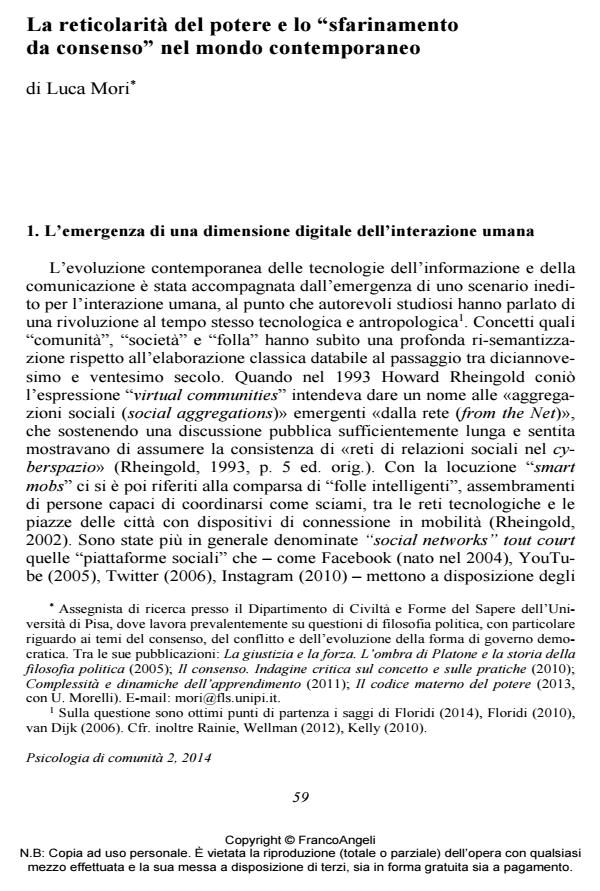Power networking and "grain pulverizing of consensus" in the contemporary world
Journal title PSICOLOGIA DI COMUNITA’
Author/s Luca Mori
Publishing Year 2015 Issue 2014/2
Language Italian Pages 10 P. 59-68 File size 43 KB
DOI 10.3280/PSC2014-002005
DOI is like a bar code for intellectual property: to have more infomation
click here
Below, you can see the article first page
If you want to buy this article in PDF format, you can do it, following the instructions to buy download credits

FrancoAngeli is member of Publishers International Linking Association, Inc (PILA), a not-for-profit association which run the CrossRef service enabling links to and from online scholarly content.
The evolution of information and communication technologies has contributed to the emergence of new scenarios for human-human and human-technologies interactions. New words and phrases like "virtual communities" and "smart mobs" have been introduced to denote unprecedented patterns of social and political actions. This article deals with the concomitant transformation of power relations and asymmetries, with particular reference to consensus dynamics. The analysis leads to identification of complex phenomena, whose main characteristics can be summarized by using the metaphor of "grain pulverizing": when such a metaphor is appropriate, it is because it conveys the phenomenology and outcome of power management practices, which are oriented to new types of aggregates that lose compactness as fast as they assumed it.
Keywords: Aggregates, consensus, interaction models, power, social networks, networking
Luca Mori, La reticolarità del potere e lo "sfarinamento da consenso" nel mondo contemporaneo in "PSICOLOGIA DI COMUNITA’" 2/2014, pp 59-68, DOI: 10.3280/PSC2014-002005